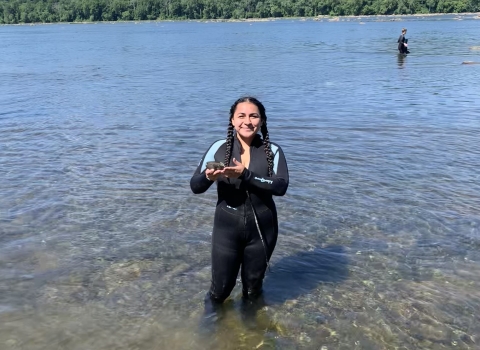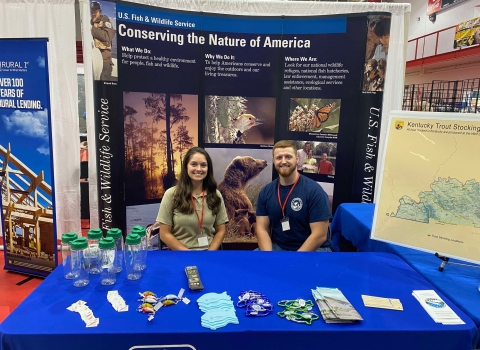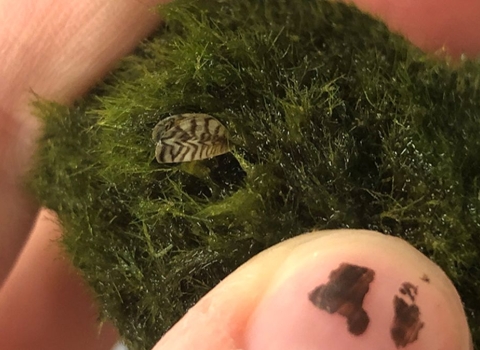Salmon, steelhead and other aquatic species in the Pacific Northwest recently got some great news.
The Department of the Interior announced more than $3.5 million in funding for 10 fish passage fish passage
Fish passage is the ability of fish or other aquatic species to move freely throughout their life to find food, reproduce, and complete their natural migration cycles. Millions of barriers to fish passage across the country are fragmenting habitat and leading to species declines. The U.S. Fish and Wildlife Service's National Fish Passage Program is working to reconnect watersheds to benefit both wildlife and people.
Learn more about fish passage projects in Idaho, Oregon and Washington. They are part of 40 fish passage projects in 23 states and Puerto Rico receiving nearly $38 million in fiscal year 2022 funding from President Biden’s Bipartisan Infrastructure Law Bipartisan Infrastructure Law
The Bipartisan Infrastructure Law (BIL) is a once-in-a-generation investment in the nation’s infrastructure and economic competitiveness. We were directly appropriated $455 million over five years in BIL funds for programs related to the President’s America the Beautiful initiative.
Learn more about Bipartisan Infrastructure Law .
With a total of $200 million in investments in the National Fish Passage Program over the next five years, the Bipartisan Infrastructure Law will bolster efforts to address outdated, unsafe or obsolete dams, culverts, levees and other barriers fragmenting our nation’s rivers and streams, which will help restore fish passages and aquatic connectivity.
“This is a significant investment to improve our fish passage work across the Pacific Northwest,” said acting Pacific Region Director Hugh Morrison. “These projects help restore habitat connectivity for fish and aquatic species. They’ll also help support our Tribes, state and federal partners, nonprofit groups and local communities through improved infrastructure.”
Millions of obsolete or poorly designed dams, roads, and levees in the U.S. keep fish and other aquatic species from moving freely to feed, migrate and reproduce. Fish passage barriers not only fragment aquatic habitats, they are also often more susceptible to impacts from climate change climate change
Climate change includes both global warming driven by human-induced emissions of greenhouse gases and the resulting large-scale shifts in weather patterns. Though there have been previous periods of climatic change, since the mid-20th century humans have had an unprecedented impact on Earth's climate system and caused change on a global scale.
Learn more about climate change . The National Fish Passage Program works with local communities on a voluntary basis to remove barriers and restore rivers for the benefit both fish and people.
Since 1999, the Service’s National Fish Passage Program has:
· Removed or bypassed 3,202 barriers to fish passage
· Reopened access to 57,736 miles of upstream habitat for fish and other aquatic organisms
· Reopened access to 193,783 acres of wetland habitat for fish and other animals
· Worked with over 2,000 partners across the country
Find out more details about each of the 10 projects in the Pacific Northwest at the links below.
| Project Name | Location | Funding |
|---|---|---|
| Mill Creek Fish Passage | ID, Caribou | $60,000 |
| Illingsworth Creek Fish Passage Improvement | OR, Tillamook | $150,000 |
| Myrtle Creek Fish Passage Improvement | OR, Tillamook | $500,000 |
| Samson Creek Fish Passage Improvement | OR, Tillamook | $100,000 |
| Anton & Cedar Creek Fish Passage Restoration | WA, Clallam | $992,000 |
| Johnson Creek Fish Passage Improvement | WA, Okanogan | $600,000 |
| Schafer Boom Road Camp Creek Fish Passage Barrier Corrections | WA, Grays Harbor | $75,900 |
| South Fork Tieton Bridge Fish Passage Improvement | WA, Yakima | $400,000 |
| West Fork Grays River Fish Passage Project | WA, Pacific | $99,800 |
| Wisen Creek Fish Passage Restoration | WA, Clallam | $551,000 |






